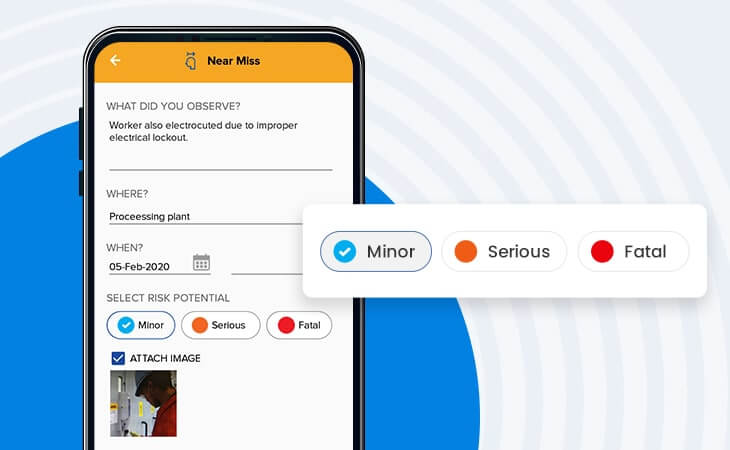
Implementing a Near Miss Reporting System
From almost tripping-off stairs to narrowly evading the trajectory of a falling object… most of us may have encountered a near miss or witnessed it happening to someone else.
Can you recall your reaction to the accident that wasn’t?
For some, a near miss can be a serious cause of concern and agitation – knowing how perilously close they had evaded a dangerous predicament.
While for others, this tryst with danger presents an opportunity to lord-over their charmed existence with a good story.
No matter how we react to near misses… it usually takes an accident or disaster to capture our undivided attention to a glitch in the system.
For example, the tragic explosion of shuttle Columbia on re-entry could have been avoided, had NASA paid heed to a near-miss vulnerability that was reported on 79 previous shuttle launches.
The concept of incident reporting or taking action on near-misses may seem futile, especially when the odds keep falling in your favor or when there are zero casualties coupled with the fact that there are no legal repercussions for not reporting near misses.
Yet, as we look at our history, almost every catastrophe – big or small, was a result of overlooking timely near-miss interventions.
By reporting a near-miss incident, you potentially help unravel a chain of events that could potentially lead to serious physical damage or financial loss.
The questions now is… can near-misses which is impervious to time and space, actually be tracked?

Fortunately, we can! The Safetymint near miss reporting software allows users to easily report, investigate, collaborate, and provide analytics to chart a road map to improve safety processes.
With a solution in place, let’s dive deep into understanding how a near-miss system can benefit your workplace.
Prevention is better than a cure:
Recognizing the importance of a reporting culture must start from the top. Far too often, the management presses the panic button when they incur losses – either of reputation or finances. Investing in a near-miss system that effectively captures, identifies, and communicates potential hazards, is actually a preventive measure to curb losses.
Seamlessly encourage employee participation:
Enforcing a reporting culture on employees may sway them away, but a system that is both inclusive to your worker’s needs and is easy-to-use may have the ripple effect to encourage active participation.
Sometimes employees can be sensitive to reporting their closest aide who is reluctant to wear a helmet or deliberately performs machine maintenance without proper lock-out or tag-out precautions. To make sure every incident is reported even if it’s in total anonymity, our incident management software allows individuals to report near misses without divulging their identities.

Unravel the root of the problem:
Though accidents are never premeditated, it has a cause and effect (where one event can lead to a chain of events). To effectively combat an impending disaster, you need a system that can comprehensively determine the cause of a near-miss, and align teams to investigate or take remedial action based on consistent and accurate documentation of reports.
Conclusion:
A fine line separates a near miss from an accident, often corrective steps that tilts the balance in favor of near-misses may come down to a simple turning-off of a switch or negligent attitude that can be easily controlled.
Get started with a free trial of Safetymint to implement a near-miss reporting system that can effectively contain incidents and eliminate its re-occurrence.
Also, checkout our detailed guide on how to write an incident report.
Joshua Martyn was a content manager at Safetymint, crafting helpful contents that enlighten readers and EHS professionals alike, about fresh trends, technologies and perspectives from the world of safety.




